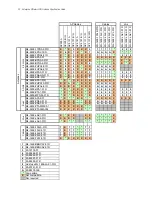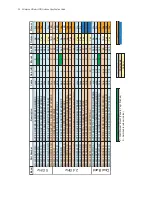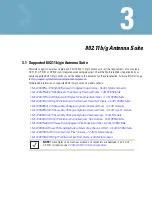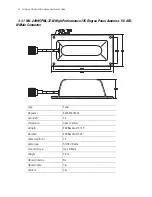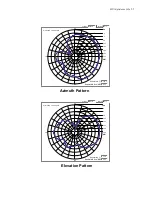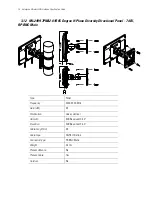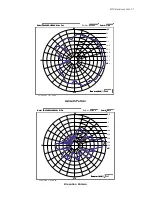
Antenna Selection and Description
1-7
1.2
Antenna Selection Criteria
In addition to antenna frequency, there is other criteria to consider when selecting an antenna for the
AP-5131, AP-5181 or AP300 (non-integrated antenna) model access port.
1.2.1 Antenna Pattern
1.2.1.1 Omni-Directional
Signal radiates from the antenna in all directions on the horizontal plane.
1.2.1.2 Directional
Signal radiates in a specific direction, typically described as a beam of given width, expressed in degrees in
the horizontal and vertical plane. For more information, see
Azimuth 3dB Beamwidth on page 1-8
and
Elevation 3dB Beamwidth on page 1-8
.
1.2.2 Antenna Type
1.2.2.1 Panel
A panel antenna is a flat antenna mounted to a wall or other vertical surface and radiates RF energy (radio
waves) directionally away from the wall. They usually have gain greater than 5 dBi and are not suitable for
omni-directional situations. Ideally suited for long hallways.
1.2.2.2 Patch
A patch antenna is a flat antenna mounted on the ceiling but whose pattern is omni-directional. Most of the
energy goes out horizontally to the sides of the antenna and equal in all directions.
1.2.2.3 Dipole
A dipole antenna is a tubular antenna that can be either a pipe shape, a straight flexible rod or a paddle. This
antenna has an omni-directional pattern when placed in a vertical position. It usually has 2 dBi of gain.
1.2.2.4 Dipole Array
Essentially a dipole, a dipole array is two or more dipoles that are placed one on top of the other, requiring
a longer tube to hold them. The advantage of a dipole array is that it has higher gain.
1.2.2.5 Parobolic Grid
A paraobolic grid antenna is a very directional, dish-like antenna. Its parabolic reflector focuses the RF
energy like a flashlight. Most of the time the radiating element is a dipole, but when combined with the dish,
it becomes very directional with gain up to 24 dBi. Usually used in long point-to-point systems.
1.2.2.6 Yagi
A yagi antenna is a antenna that has an internal structure resembling that of typical antennas used for TV
reception (a series of rods perpendicular to a main rod, making a triangular shape). This is a directional
antenna with less gain than the PGA, typically around 13 dBi. It may be used in either point-to-point
situations, or to cover a very long, narrow area in point-to-multi-point situations.
Summary of Contents for AP 5131 - Wireless Access Point
Page 16: ...1 10 Enterprise Wireless LAN Antenna Specification Guide ...
Page 46: ...3 26 Enterprise Wireless LAN Antenna Specification Guide ...
Page 60: ...4 14 Enterprise Wireless LAN Antenna Specification Guide ...
Page 70: ...5 10 Enterprise Wireless LAN Antenna Specification Guide ...
Page 80: ...7 6 Enterprise Wireless LAN Antenna Specification Guide ...
Page 110: ...11 12 Enterprise WLAN Antenna Specification Guide ...
Page 113: ......


















